Nelson Awards
2016 Nelson Award: Thomas Buchholz
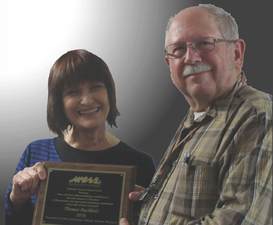 Thomas Buchholz has been named the 2016 recipient of the Katherine G. Nelson Award, presented by the Weis Earth Science Museum, Menasha, Wisconsin. The award honors those who have made outstanding contributions to earth science in Wisconsin or Wisconsinites who have made outstanding contributions to earth science in general.
Thomas Buchholz has been named the 2016 recipient of the Katherine G. Nelson Award, presented by the Weis Earth Science Museum, Menasha, Wisconsin. The award honors those who have made outstanding contributions to earth science in Wisconsin or Wisconsinites who have made outstanding contributions to earth science in general.
His interest in geology began with a bribe when he was about 10 years old. After receiving his back-to-school vaccinations, his mother would often buy Tom a book of his choice, and that year it was a book about rocks and minerals. He was hooked. His interest continued through school and he even got in one year as geology major at the University of Wisconsin-Platteville.
But then he was invited to see the world courtesy of the US Army via the draft. Tom decided to make a career of the Army, which afforded him the opportunity to look at geology and collect minerals at various U.S . sites, and, above all, in Germany. Over those years, he subscribed to various U.S. and German mineralogy periodicals (Rocks & Minerals, Mineralogical Record, Lapis, Mineralien Welt, etc.), accumulated a library of geological and mineralogical reference books, and acquired a good Zeiss binocular microscope. Upon retiring from the Army, Tom returned to Wisconsin, and wound up employed at Wood County Emergency Management for 22 years.
Tom began exploring Wausau area pegmatites while home on leave in his later years in the Army, and within a year or two of civilian life, he had accumulated a trove of unidentified, but interesting, minerals. At a loss on how to definitively identify these often-tiny treasures, Tom wrote to Gene LaBerge, then a geology professor at the University of Wisconsin- Oshkosh, to ask for suggestions. Gene suggested that he contact Al Falster, who was then at the University of New Orleans. Al suggested that Tom send some of the “unknowns” to him and that he would work on them, as time allowed. However, Al’s time was limited and so, after a year or two, he suggested that Tom come to New Orleans for a week or so and they could concentrate on the samples together. This evolved into an annual expedition for Tom. As a result, over the years, this collaboration has resulted in a number of abstracts and publications.
With Als’ retirement from the University of New Orleans and follow-on employment with the Maine Mineral and Gem Museum in Bethel, ME, the Tom is planning to continue his annual research trips, though now to Maine rather than Louisiana. Tom believes that there is still a lot to learn about the mineralogy and geology of Wisconsin, more than he’ll be able to get to. So, Tom is leaving plenty for other inquiring souls to work on.
It’s hard for Tom to pinpoint his favorite mineral discovery, but he is able to narrow it down to the phenakite specimen he found in June 1996 in Wimmer Pit #3 in the northeast portion of the Nine Mile Granite, Wausau Complex, Marathon County, WI. The crystal is featured on the Wisconsin Geological and Natural History Survey web site (www.wgnhs.edu), and was also pictured in Rocks & Minerals, volume 73, number 6. His other choice for favorite discovery might be his finding of late-stage tantalum enrichment, resulting in the formation of late-stage tantalum-dominant Nb-Ta minerals in many of the pegmatites in the Nine Mile Granite.
Now retired from his second career, Tom continues to search for the “tiny treasures” in Wisconsin’s rocks, helping us better understand the geologic processes that shaped the State by taking the time and care to carefully collect the rare and obscure minerals that so many others overlook.
The Nelson Award was presented to Tom at the April meeting of the Heart of Wisconsin Gem & Mineral Society in Junction City, WI.
2014 Nelson Award: Richard and Rachel Paull
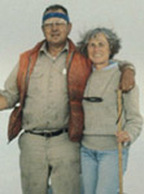 Drs. Rachel Krebs Paull and the late Richard (Dick) A. Paull were the recipients of the 2014 Nelson Award presented by the Weis Earth Science Museum, Menasha, WI. The award honors those who have made outstanding contributions to earth science in Wisconsin or Wisconsinites who have made outstanding contributions to earth science in general.
Drs. Rachel Krebs Paull and the late Richard (Dick) A. Paull were the recipients of the 2014 Nelson Award presented by the Weis Earth Science Museum, Menasha, WI. The award honors those who have made outstanding contributions to earth science in Wisconsin or Wisconsinites who have made outstanding contributions to earth science in general.
Wisconsin natives, this husband and wife taught generations of geology students at the University of Wisconsin-Milwaukee (UW-M) geology department, and were especially famous for the rigorous summer field camp program in Wyoming and Idaho that they hosted for UW-M students. In 1962, Dick served as the first chair of the then-new UW-M geology department and designed the curriculum along with colleague Dr. Katherine G. Nelson, for whom this award is named. Both of these geologists did pioneering research in the western states, but they also wrote four books on the geology of Wisconsin and the Upper Peninsula of Michigan, which are still in high demand. After retirement, Dick and Rachel moved to Littleton, CO, in 1998; Dick passed away in 2012. Their award was presented via post in March 2015.
2013 Nelson Award: William S. Cordua
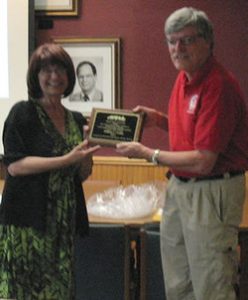 William S. Cordua has been named the 2013 recipient of the Katherine G. Nelson Award, presented by the Weis Earth Science Museum, Menasha, Wisconsin. The award honors those who have made outstanding contributions to earth science in Wisconsin or Wisconsinites who have made outstanding contributions to earth science in general.
William S. Cordua has been named the 2013 recipient of the Katherine G. Nelson Award, presented by the Weis Earth Science Museum, Menasha, Wisconsin. The award honors those who have made outstanding contributions to earth science in Wisconsin or Wisconsinites who have made outstanding contributions to earth science in general.
The dinosaurs didn’t do it. As a boy growing up in the Washington, D.C. area, Bill Cordua had the opportunity to visit the Smithsonian Museum of Natural History on a regular basis. Although he admired the dinosaur fossils, it wasn’t until he had seen the Hall of Minerals that he became hooked on geology. He was so interested in minerals that he eventually earned his Ph.D. in geology from Indiana University.
Not content to keep his appreciation for minerals to himself, Bill joined the faculty of the geology program at the University of Wisconsin-River Falls in 1973. For the next 40 years, he shared his knowledge and love of rocks with his students, who considered him an “awesome” professor.
Bill was also generous with his time and knowledge when it came to amateur mineral enthusiasts and rock clubs. Of special note, he wrote interesting and accessible popular articles about minerals and various geologic topics. Many of these have been widely published, and some have won national awards.
Wisconsin has been the focus of his scientific research. In particular, Bill has compiled the most authoritative and complete list of Wisconsin minerals and the localities where they are found. This database can be found on the website of the Wisconsin Geological & Natural History Survey. He also conducted the chemical analysis of the Flambeau copper mine in Rusk County, and researched how the deposit formed. Intrigued by an unusual rock structure in Pierce County back in 1985, Bill spent the next 20 years patiently looking for evidence that it was the site of meteorite impact crater. Thanks to Bill’s determination, indisputable proof was found by 2007, and the site, known as the Rock Elm Disturbance, is now known to be what remains of a meteorite that slammed into Wisconsin 470,000,000 years ago. As usual, Bill wanted to educate as many people as possible about the crater, so he co-authored a tour guide for the public.
Even after retirement, Bill continues to provide his expertise of Wisconsin geology. Currently, he is working with the city of Ladysmith to mount an exhibit about the Flambeau copper mine.
2012 Nelson Award: Mark Shurilla
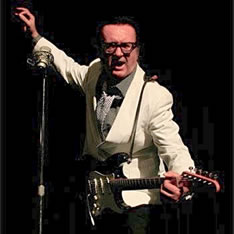 Mark Shurilla has been named the 2012 recipient of the Katherine G. Nelson Award, presented by the Weis Earth Science Museum, Menasha, Wisconsin. The award honors those who have made outstanding contributions to earth science in Wisconsin or Wisconsinites who have made outstanding contributions to earth science in general.*
Mark Shurilla has been named the 2012 recipient of the Katherine G. Nelson Award, presented by the Weis Earth Science Museum, Menasha, Wisconsin. The award honors those who have made outstanding contributions to earth science in Wisconsin or Wisconsinites who have made outstanding contributions to earth science in general.*
A native of Milwaukee, Mark Shurilla has had two primary loves in his life: rocks and rock. A talented musician, Mark was the founder of a diversity of bands, was nominated for a Grammy, had a song he wrote about Milwaukee Brave baseball player Warren Spahn inducted into the National Baseball Music Series Showcase, and established a number of music-oriented publications, including The Shepherd Express, Milwaukee’s free alternative newspaper. Perhaps he is most famous for producing, promoting and performing in the Buddy Holly Tribute Showcase, which has toured the Midwest for more than 20 years.
Mark’s love of old things goes well beyond classic rock, however, as he has a passion for the fossils found in ancient rocks. In fact, Mark learned paleontology from the award’s namesake, Katherine Nelson, when he was a student at the University of Wisconsin-Milwaukee in the 1970s. Over the years, Mark also has been an avid member of amateur rock clubs, such as the Wisconsin Geological Society in Milwaukee, which Katherine helped found.
Mark is responsible for Wisconsin having an official state fossil, and an appropriate one at that. Back in the early 1980s, he began promoting the trilobite Calymene celebra (now called Gravicalymene celebra), with the same tireless enthusiasm with which he promoted one of his bands or shows. Rather than a generic fossil, Mark chose a particular trilobite from the Silurian rocks of Milwaukee, which was common, usually found complete, and was famous among fossil collectors. His perseverance finally paid off, and this trilobite was designated state fossil in 1986.
Fossils also figured into Mark’s entrepreneurial spirit. He established the company Express Fossils to deal in fossil specimens, especially amber. Although he loves all fossils, amber (the petrified resin of ancient trees that may contain the remains of insects and other organisms) has become his primary prehistoric passion. He travelled to exotic locales around the world in order to collect and acquire amber, but has focused mostly on the Dominican Republic. Mark has become a true amber expert, whose knowledge is sought after by major auction houses, museums, and collectors. His knowledge about the fossil marketplace also makes him one a handful of expert fossil appraisers in the U. S. He has even combined his love of fossils and music when, with Colorado friend Chris Weege, he established Dinopalooza, an outdoor music festival held amongst the dinosaur bone beds.
Paleontology has also benefitted from Mark’s career as a professional writer. He has been the editor of the MAPS Digest, the publication of the Mid-America Paleontology Society, since 2005, and has written a number of papers for that journal as well. For the last few years, he has been working on a book about the amber of the Dominican Republic, which was commissioned by that country. As Mark has gotten to know the local people who earn their living by collecting amber fossils, has visited the collecting sites many times, and has seen most of the spectacular fossils found there in recent years, the book promises to be exciting and engaging.
From little kids to major museums, Mark has always been generous to everyone with his knowledge and specimens. Even with his incredibly full schedule in the music promotion and performance business, Mark always found time to help identify fossils in a collection, to bring together donors and museums, to conduct appraisals, and to just share his excitement about fossils. For example, he helped the Weis Earth Science Museum gather specimens for exhibits when it opened ten years ago, from his own collection and by calling in favors from fellow fossil enthusiasts.
Mark clearly embodies both objectives of the Nelson Award, having made outstanding contributions to earth science in Wisconsin and as a Wisconsinite who has made outstanding contributions to the earth sciences in general. A little of Katherine Nelson’s inspiration must have rubbed off on him back in his student days.
*Sadly, this award was presented posthumously, as Mark passed away on May 14, 2012, at age 65, while recuperating from heart surgery.
2010 Nelson Award: Gene and Sally LaBerge
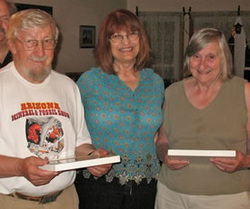 Gene LaBerge and Sally LaBerge have been named the 2010 recipient of the Katherine G. Nelson Award, presented by the Weis Earth Science Museum, Menasha, Wisconsin. The award honors those who have made outstanding contributions to earth science in Wisconsin or Wisconsinites who have made outstanding contributions to earth science in general.
Gene LaBerge and Sally LaBerge have been named the 2010 recipient of the Katherine G. Nelson Award, presented by the Weis Earth Science Museum, Menasha, Wisconsin. The award honors those who have made outstanding contributions to earth science in Wisconsin or Wisconsinites who have made outstanding contributions to earth science in general.
Dr. Gene and Sally LaBerge have devoted themselves to deciphering the ancient geology of Wisconsin and sharing their knowledge and love for rocks, minerals and fossils with generations of students of all ages.
Fatefully, they both were born on the untamed Precambrian terrane of northern Wisconsin, Gene in Ladysmith and Sally in Niagara. Gene received his introduction to Precambrian geology on a summer job for U.S. Steel in 1957. After identifying what he recalls as “several billion pebbles” during the summer of 1958, Gene recognized that Wisconsin Precambrian geology was more than a “green blob” on the map.
Gene and Sally both received their graduate degrees from the University of Wisconsin. In 1965, both Sally and Gene were hired at the newly established geology department at the University of Wisconsin Oshkosh. Given the mandate to build a department, Gene taught physical geology, mineralogy, lithology, optical and X-ray mineralogy, petrology, mineral deposits, and geology of Wisconsin, and Sally taught physical and historical geology labs, glacial geology and field methods. Over the next 33 years, Gene proved to be an exemplary educator, introducing students to field geology and inspiring numerous students to pursue careers as geologists.
As early as 1968, Gene’s work was attracting attention as demonstrated by the Tri-State Geological Field Trip that he and Len Weis organized to the greenstone belt of the Wausau area, which was attended by more than 600 people! Gene has spent more than fifty years conducting fieldwork on the Precambrian geology of Wisconsin and Michigan, with the U.S. Geological Survey and the Wisconsin Geological and Natural History Survey. During his career, Gene may have walked across more of Wisconsin—from Baraboo to Lake Superior—than anyone else. And he has the numerous publications to prove it.
Gene is no stranger to the award stage. Before his retirement in 1998, Gene received all of the teaching and research awards offered by UW Oshkosh—the only faculty member to have done so. In 1989, he received the Rosebush University Professor Award, the highest award that UW Oshkosh presents for teaching excellence, outstanding research and service. In 1995, he received the Goldich Medal from the Institute on Lake Superior Geology, which is awarded “to a geologist whose name is associated with a substantial interest in, or a major contribution to, the geology of the Lake Superior region”. His book Geology of the Lake Superior Region is in its fifth printing. In 1999, he and his co-authors won the Best Paper Award from Mineralogical Record for their Flambeau Mine article. In 2004, Gene received the Charles A. Salotti Earth Science Education Award from the Seaman Mineral Museum Society at Michigan Technological University. It was noted that Gene “dedicated his life to the advancement of mineralogy and the geosciences through education, and in so doing has inspired many others to pursue careers in those fields.”
As a micropaleontologist, Sally began her geological career with a Fulbright Fellowship in Australia. She also taught at University of Wisconsin Oshkosh and UW-Fox Valley. Sally’s “professional” career was more limited than Gene’s. But in many ways, Sally was probably the reason Gene was able to maintain such an active successful career. She raised their three daughters, kept the household together, helped with fieldwork and research, and condoned the unexpected care and feeding of fellow geologists who appeared on their doorstep, even when it was a cabin in the swamps. During all this, Sally has been an outstanding informal educator, generously sharing her love of fossils, minerals and Wisconsin geology with everyone. She was instrumental in establishing the youth program at the Oshkosh Earth Science Club, and helped generations of students and others understand what they were looking at on fieldtrips.
2009 Nelson Award: Joe Pohl
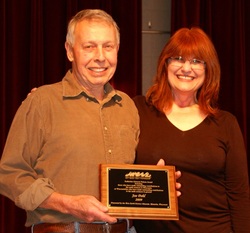 Joel Pohl of Belgium, Wisconsin, was named the first recipient of the Nelson Award at the Weis Earth Science Museum on March 14, 2009. A dairy farmer for most of his life, Joe is a quiet and unassuming man. But that bucolic image can be misleading. The plaid flannel shirt disguises the heart of a true adventurer. Although he has many stories to tell about his exploits as a member of a tank crew in the Korean conflict, an over-the-road truck driver, a big game hunter, and more, it’s Joe’s passion for paleontology that got him nominated for this award.
Joel Pohl of Belgium, Wisconsin, was named the first recipient of the Nelson Award at the Weis Earth Science Museum on March 14, 2009. A dairy farmer for most of his life, Joe is a quiet and unassuming man. But that bucolic image can be misleading. The plaid flannel shirt disguises the heart of a true adventurer. Although he has many stories to tell about his exploits as a member of a tank crew in the Korean conflict, an over-the-road truck driver, a big game hunter, and more, it’s Joe’s passion for paleontology that got him nominated for this award.
Even his cows’ milking schedule couldn’t keep Joe down on the farm if there were fossils to be collected. Back in the 1970s, during the collecting heyday at the infamous Pit 11 locality for Mazon Creek fossils, Joe would pile his kids in the car after the morning milking and make a beeline down to the northern Illinois coal strip mines. After a long day climbing up and down the strip mine hills in search of ironstone nodules containing the enigmatic tully monster and other soft-bodied creatures, they would race back to the farm for evening milking. Wanting to learn more about his fossil finds, Joe began to visit Dr. Eugene Richardson, then curator of Invertebrate Paleontology at the Field Museum in Chicago. Richardson realized that Joe had a knack for for finding fossils, and Joe soon started donating specimens to the museum—especially the weird ones. In fact, he discovered some of the earliest-known fossil examples of some animal groups, like the octopus. Joe’s generosity have led paleontologists to a better understanding of evolution and of this unique and important Pennsylvanian fossil deposit. He was honored for his efforts when several new species from Mazon Creek were named after him (his son Jim, who is quite a collector himself, also received this honor).
Joe wasn’t interested in just the flashy Mazon Creek fossils though. He just loves fossils. In fact, his extreme dedication to paleontology is demonstrated by his quest for conodonts (that’s right, conodonts). After one of the many Mid-America Palentological Society Expos that he attended, Joe took a little side trip to try his luck in some Pennsylvanian deposits in western Illinois. He found interesting invertebrate fossils, but he soon attracted the attention of micropaleontologists for his conodont finds. Joe would collect certain black shale strata from the stream banks to take home, where, during the long Wisconsin winters, he would carefully split the rock in search of tiny conodont fossils. As usual, he generously shared his knowledge and the fossils with specialists, who gained new information about this important group of fossil animals, which are considered to be early vertebrates. Again, scientists showed their appreciation by naming a new species after him.
The Weis Earth Science Museum was pleased to present the first Nelson Award to Joe Pohl, a quintessential Wisconsinite (a dairy farmer in America’s Dairyland, no less). Because of his passion, generosity, skill, and knowledge, he has made important fossil discoveries, has unselfishly shared important specimens with the scientific community, has helped to advance our knowledge of the history of life on Earth, and serves as a shining example of the substantial role that “amateurs” can play in the progress of science.
